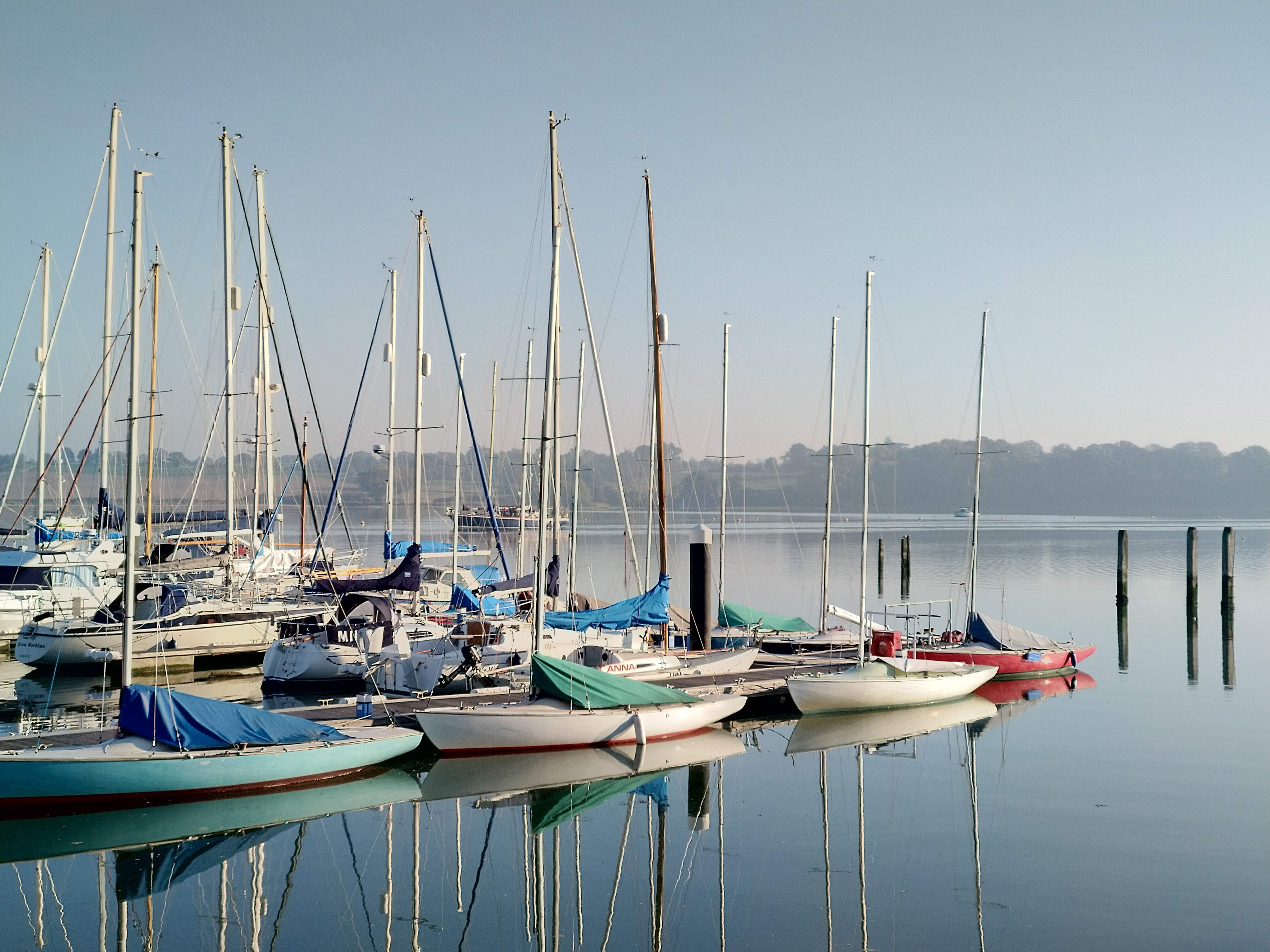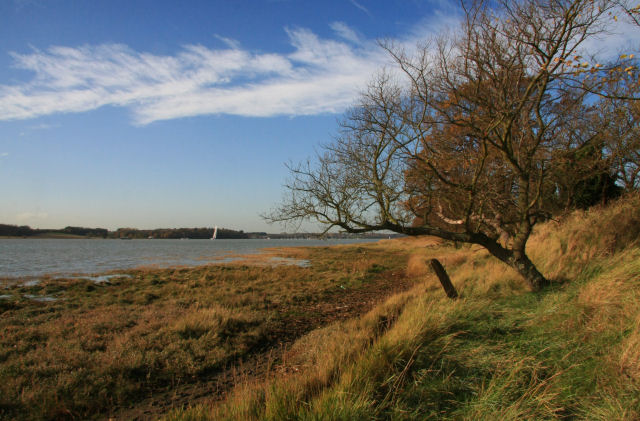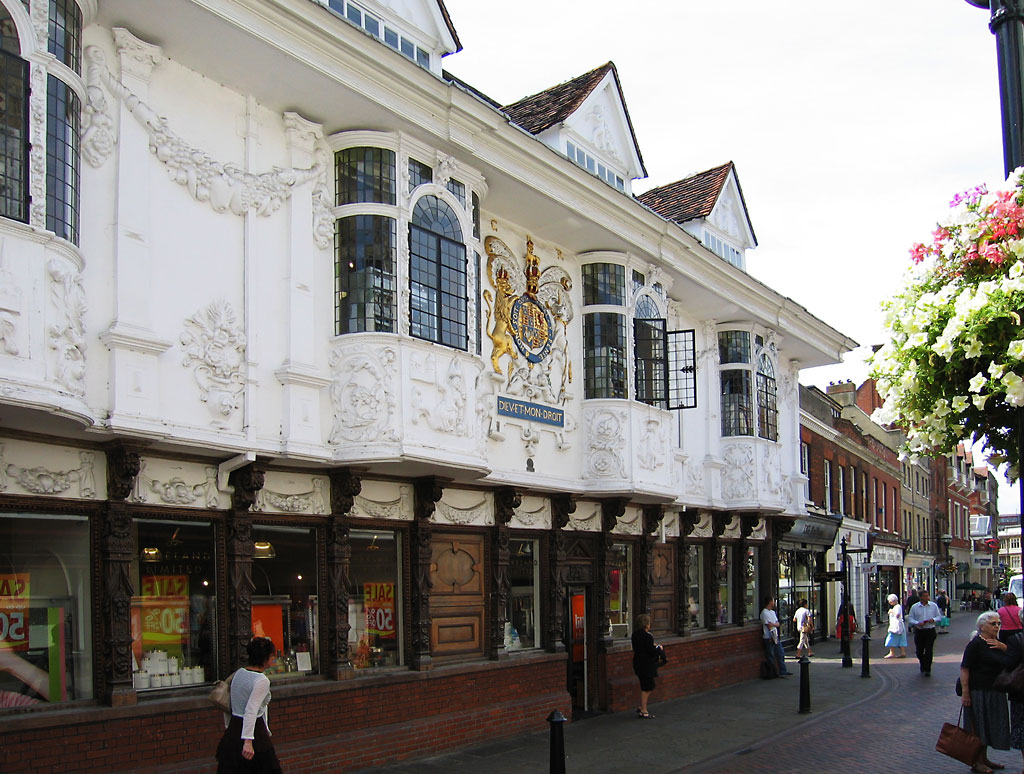|
Ajax 23
History The Ajax 23 is a keelboat designed by Oliver Lee in 1967. It is a 23 ft boat sailed by 3 people. The Ajax 23 is built out of GRP and built by Halmatic. Roughly 60 boats are in existence with 1 in Sydney another in Ireland and the rest split between sailing on the River Orwell at Woolverstone near Ipswich at the Royal Harwich Yacht Club and in St Mawes, Cornwall. National Championships The National Championships for the Ajax Class take place in the summer each year, and are alternately hosted by the Royal Harwich Yacht Club (racing taking place in Dovercourt Bay) and St Mawes Sailing Club (racing taking place in the River Fal estuary). The National Championships at St Mawes generally precede Falmouth Week, which also includes class racing for Ajaxes. Related Designs * The Ajax is similar to the, smaller and more numerous, Squib which Oliver Lee later designed. * Achilles 24 The Achilles 24 is a British sailboat that was designed by Oliver Lee and Chris But ... [...More Info...] [...Related Items...] OR: [Wikipedia] [Google] [Baidu] |
Keelboat
A keelboat is a riverine cargo-capable working boat, or a small- to mid-sized recreational sailing yacht. The boats in the first category have shallow structural keels, and are nearly flat-bottomed and often used leeboards if forced in open water, while modern recreational keelboats have prominent fixed fin keels, and considerable draft. The two terms may draw from cognate words with different final meaning. A keep boat, keelboat, or keel-boat is a type of usually long, narrow cigar-shaped riverboat, or unsheltered water barge which is sometimes also called a poleboat—that is built about a slight keel and is designed as a boat built for the navigation of rivers, shallow lakes, and sometimes canals that were commonly used in America including use in great numbers by settlers making their way west in the century-plus of wide-open western American frontiers. They were also used extensively for transporting cargo to market, and for exploration and trading expeditions, for w ... [...More Info...] [...Related Items...] OR: [Wikipedia] [Google] [Baidu] |
Oliver Lee (naval Architect)
Oliver Lee may refer to: *Oliver Lee (New Mexico gunfighter) (1865–1941), American political figure *Oliver M. Lee (born 1929), Chinese-American academic; campaigned for U.S. Senate (See Electoral history of Daniel Inouye) *Oliver Lee (actor) (born 1985), English performer *Olly Lee (born 1991), English midfielder for Gillingham *Oliver Lee, one half of British electronic music duo Snakehips (duo), Snakehips *Oliver Lee (naval architect), boat designer and builder, whose designs include the Ajax 23 and Squib sailboat *Oliver A. Lee, former senior officer in the UK Royal Marines *Oliver J. Lee (1876-1947), American farmer, businessman, and politician See also *USS Oliver H. Lee (1861), USS ''Oliver H. Lee'' (1861), American schooner used by Union Navy during Civil War *Oliver Lee Memorial State Park, American state park, located in Southern New Mexico's Otero County, United States *Lee (English surname) {{hndis, Lee, Oliver ... [...More Info...] [...Related Items...] OR: [Wikipedia] [Google] [Baidu] |
Glass-reinforced Plastic
Fiberglass (American English) or fibreglass (Commonwealth English) is a common type of fiber-reinforced plastic using glass fiber. The fibers may be randomly arranged, flattened into a sheet called a chopped strand mat, or woven into glass cloth. The plastic matrix may be a thermoset polymer matrix—most often based on thermosetting polymers such as epoxy, polyester resin, or vinyl ester resin—or a thermoplastic. Cheaper and more flexible than carbon fiber, it is stronger than many metals by weight, non-magnetic, non-conductive, transparent to electromagnetic radiation, can be molded into complex shapes, and is chemically inert under many circumstances. Applications include aircraft, boats, automobiles, bath tubs and enclosures, swimming pools, hot tubs, septic tanks, water tanks, roofing, pipes, cladding, orthopedic casts, surfboards, and external door skins. Other common names for fiberglass are glass-reinforced plastic (GRP), glass-fiber reinforced plastic (GFRP) or GFK ... [...More Info...] [...Related Items...] OR: [Wikipedia] [Google] [Baidu] |
Sydney
Sydney ( ) is the capital city of the state of New South Wales, and the most populous city in both Australia and Oceania. Located on Australia's east coast, the metropolis surrounds Sydney Harbour and extends about towards the Blue Mountains to the west, Hawkesbury to the north, the Royal National Park to the south and Macarthur to the south-west. Sydney is made up of 658 suburbs, spread across 33 local government areas. Residents of the city are known as "Sydneysiders". The 2021 census recorded the population of Greater Sydney as 5,231,150, meaning the city is home to approximately 66% of the state's population. Estimated resident population, 30 June 2017. Nicknames of the city include the 'Emerald City' and the 'Harbour City'. Aboriginal Australians have inhabited the Greater Sydney region for at least 30,000 years, and Aboriginal engravings and cultural sites are common throughout Greater Sydney. The traditional custodians of the land on which modern Sydney stands ar ... [...More Info...] [...Related Items...] OR: [Wikipedia] [Google] [Baidu] |
Ireland
Ireland ( ; ga, Éire ; Ulster Scots dialect, Ulster-Scots: ) is an island in the Atlantic Ocean, North Atlantic Ocean, in Northwestern Europe, north-western Europe. It is separated from Great Britain to its east by the North Channel (Great Britain and Ireland), North Channel, the Irish Sea, and St George's Channel. Ireland is the List of islands of the British Isles, second-largest island of the British Isles, the List of European islands by area, third-largest in Europe, and the List of islands by area, twentieth-largest on Earth. Geopolitically, Ireland is divided between the Republic of Ireland (officially Names of the Irish state, named Ireland), which covers five-sixths of the island, and Northern Ireland, which is part of the United Kingdom. As of 2022, the Irish population analysis, population of the entire island is just over 7 million, with 5.1 million living in the Republic of Ireland and 1.9 million in Northern Ireland, ranking it the List of European islan ... [...More Info...] [...Related Items...] OR: [Wikipedia] [Google] [Baidu] |
River Orwell
The River Orwell flows through the county of Suffolk in England from Ipswich to Felixstowe. Above Ipswich, the river is known as the River Gipping, but its name changes to the Orwell at Stoke Bridge, where the river becomes tidal. It broadens into an estuary at Ipswich, where the Ipswich dock has operated since the 7th century, and then flows into the North Sea at Felixstowe, the UK's largest container port, after joining the River Stour at Shotley forming Harwich harbour. The large Orwell Bridge carries the A14 trunk road over the estuary to the south of Ipswich. Name In the name ''Orwell'', ''Or-'' comes from an ancient river-name — probably pre-Celtic; but ''-well'' probably indicates an Anglo-Saxon naming. In ''A tour through England and Wales'', written in 1722, Daniel Defoe calls the river "Orwel" (though he does this inconsistently). He also mentions that "a traveller will hardly understand me, especially a seaman, when I speak of the River Stour and the River Or ... [...More Info...] [...Related Items...] OR: [Wikipedia] [Google] [Baidu] |
Ipswich
Ipswich () is a port town and borough in Suffolk, England, of which it is the county town. The town is located in East Anglia about away from the mouth of the River Orwell and the North Sea. Ipswich is both on the Great Eastern Main Line railway and the A12 road; it is north-east of London, east-southeast of Cambridge and south of Norwich. Ipswich is surrounded by two Areas of Outstanding Natural Beauty (AONB): Suffolk Coast and Heaths and Dedham Vale. Ipswich's modern name is derived from the medieval name ''Gippeswic'', probably taken either from an Anglo-Saxon personal name or from an earlier name given to the Orwell Estuary (although possibly unrelated to the name of the River Gipping). It has also been known as ''Gyppewicus'' and ''Yppswyche''. The town has been continuously occupied since the Saxon period, and is contested to be one of the oldest towns in the United Kingdom.Hills, Catherine"England's Oldest Town" Retrieved 2 August 2015. Ipswich was a settlem ... [...More Info...] [...Related Items...] OR: [Wikipedia] [Google] [Baidu] |
Royal Harwich Yacht Club
The Royal Harwich Yacht Club is a UK sports club for sailing and other waterborne leisure activities. History Founding and early history Annual regattas at Harwich providing racing events for both yachts and working boats had been organised since 1828 when, in 1843, a yacht club was formed to run them. The so-called Eastern Yacht Club carried on for the next two years running these annual events. In 1845 its Rear Commodore, William Knight arranged for Royal Patronage, securing the Dowager Queen Adelaide (King William IV's widow) as patron. The club was renamed the Royal Harwich Yacht Club and an Admiralty Warrant was also obtained giving its sailing members significant privileges in the form of mooring rights, exemption from lightage fees and free pratique in various foreign ports. Ready-built premises existed on the seafront at Harwich in the form of the Baths and Club Room which overlooked the harbour entrance. From the latter half of the 19th century until 1939, the clu ... [...More Info...] [...Related Items...] OR: [Wikipedia] [Google] [Baidu] |
St Mawes
St Mawes ( kw, Lannvowsedh) is a village on the end of the Roseland Peninsula, in the eastern side of Falmouth harbour, on the south coast of Cornwall, United Kingdom. The village, formerly two separate hamlets, lies on the east bank of the Carrick Roads, a large waterway created after the Ice Age from an ancient valley which flooded as the melt waters caused the sea level to rise. The immense natural harbour thus created is claimed to be the third largest in the world. St Mawes was once a busy fishing port, but the trade declined during the 20th century and the village now serves as a popular tourist location, with many properties functioning as holiday accommodation. The village is in the civil parish of St Just in Roseland. History and geography The village takes its name from the Celtic saint Saint Maudez (Mawe), who may have come from Ireland but is mainly venerated in Brittany. A name: 'Musidum' in Roman times, has subsequently been applied to St. Mawes, although t ... [...More Info...] [...Related Items...] OR: [Wikipedia] [Google] [Baidu] |
River Fal
The River Fal ( kw, Dowr Fala) flows through Cornwall, England, rising at Pentevale on Goss Moor (between St. Columb and Roche) and reaching the English Channel at Falmouth. On or near the banks of the Fal are the castles of Pendennis and St Mawes as well as Trelissick Garden. The River Fal separates the Roseland peninsula from the rest of Cornwall. Like most of its kind on the south coast of Cornwall and Devon, the Fal estuary is a classic ria, or drowned river valley. The Fal estuary from Tregony to the Truro River was originally called Hafaraell ( kw, Havarel, meaning ''fallow place''). Toponymy The origin and meaning of the name of the river are unknown. The earliest occurrences of the name are in documents from AD 969 and 1049. Falmouth, a town which was named ''Smithwick'' until the 17th century, is named after the River Fal. The word ''Fal'' in Cornish may refer to a prince, or perhaps to a spade or shovel. Robert Williams notes these meanings in his 1865 Corni ... [...More Info...] [...Related Items...] OR: [Wikipedia] [Google] [Baidu] |
Squib (keelboat)
A Squib is a type of small racing keelboat designed in 1967 by Oliver Lee as a successor to the Ajax 23. It is a strict " one-design" class of boat, having a length of 19' (5.79 metres), beam of 6'1½" (1.87 metres), a sail area of 170 sq. ft. (15.8 sq. mts.) upwind, 310 sq. ft. (29 sq. mts.) total and a weight of 1500 lb (680 kg) (including sails and fittings). The usual crew is two people and the boat can be cruised or raced with a Portsmouth Yardstick of 1142. The Squib has been adopted by the RYA as the National Keelboat and is big enough to race at sea and small enough to be trailed easily behind a family car. Early history Oliver Lee built the prototype Squib in 1967, using cold moulded wood. Following a succession of trials, the prototype was used as a "plug" from which copies of the boat could be built using glass-reinforced plastic construction. The first to be built was launched in June 1968, with sail number 11. Much later the plug was turned into a function ... [...More Info...] [...Related Items...] OR: [Wikipedia] [Google] [Baidu] |








